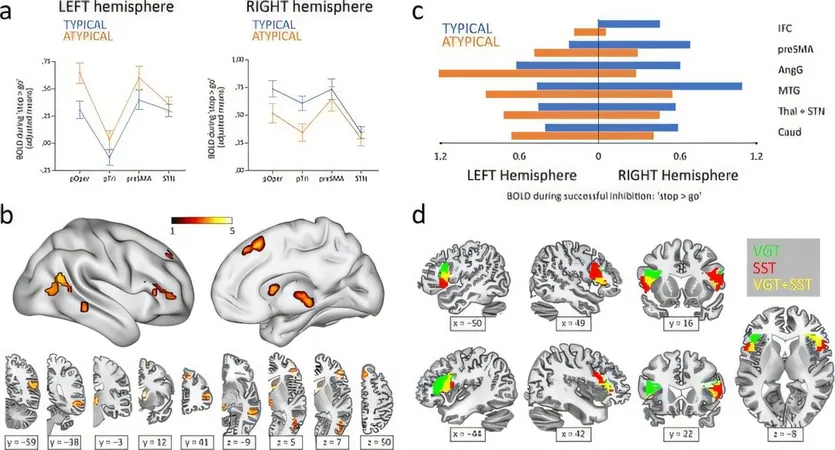
Unique Left-Handers: The Surprising Way They Use Their Brains for Language!
2025-06-09
Author: Rajesh
A Fascinating Brain Mystery Revealed
Did you know that about 10% of people are left-handed? Among this intriguing group, one in five has a unique brain quirk called atypical language lateralization. While most of us rely on our left brain to communicate, these atypical left-handers utilize their right brain. This oddity raises an age-old question within neuroscience: how does this unusual brain behavior shape our minds and actions?
A Groundbreaking Study Unveils New Insights
Led by the brilliant César Ávila at the Universitat Jaume I in Castellón, a fresh study published in eLife sheds light on this phenomenon. The research highlights that for these unique individuals, language and inhibition are surprisingly located in different hemispheres of the brain. This discovery supports theories linking atypical brain lateralization to neurodevelopmental disorders like schizophrenia, dyslexia, and autism.
Inhibition Takes a Turn in Left-Handers
The research delved into how these atypical left-handers manage inhibitory functions—essentially, our ability to restrain instincts and modify them according to circumstances. Shockingly, it turns out that in these individuals, the left hemisphere steps up to handle inhibition, flipping the script on usual brain functioning. This shift reaches deeper into brain structure, involving both subcortical pathways and the crucial connections through the corpus callosum, which shows increased white matter.
Cognitive Performance Under the Microscope
Interestingly, the study indicates that this atypical brain arrangement correlates with reduced cognitive performance in language tasks. It also hints at preclinical signs of neurodevelopmental issues within an otherwise healthy population. However, researchers found no firm link between this brain organization and performance metrics during inhibitory challenges.
Research with Real-World Implications
The study involved 86 participants identified through language hemisphere assessments—50 exhibited typical left hemisphere dominance while 36 showed right hemisphere dominance. Importantly, all participants were left-handed, and no significant effects were noted based on bilingualism.
Exploring the Creative and Complex Left-Handed Brain
The Neuropsychology and Functional Neuroimaging team relentlessly pursues understanding the peculiarities of left-handed brains that display remarkable creative talents yet are prone to neurodevelopmental challenges like epilepsy, dyslexia, and autism. Their ongoing research explores whether educational experiences akin to those of right-handed individuals contribute to learning difficulties, and they’re also examining factors like musical training that could influence atypical language lateralization.
Future Directions: Impacting Education and Rehabilitation
Looking ahead, the team's goal is to study these mechanisms in children and teenagers to enhance educational strategies and potentially prevent learning and developmental disorders.
Significance of the Findings
These insights could reshape our understanding of how neonatal injuries encourage left-handedness or how brain injuries affect this population. They carry weight in fields like brain plasticity, language development, cognitive control, and the rehabilitation of psychiatric disorders linked with a greater prevalence of left-handedness.

 Brasil (PT)
Brasil (PT)
 Canada (EN)
Canada (EN)
 Chile (ES)
Chile (ES)
 Česko (CS)
Česko (CS)
 대한민국 (KO)
대한민국 (KO)
 España (ES)
España (ES)
 France (FR)
France (FR)
 Hong Kong (EN)
Hong Kong (EN)
 Italia (IT)
Italia (IT)
 日本 (JA)
日本 (JA)
 Magyarország (HU)
Magyarország (HU)
 Norge (NO)
Norge (NO)
 Polska (PL)
Polska (PL)
 Schweiz (DE)
Schweiz (DE)
 Singapore (EN)
Singapore (EN)
 Sverige (SV)
Sverige (SV)
 Suomi (FI)
Suomi (FI)
 Türkiye (TR)
Türkiye (TR)
 الإمارات العربية المتحدة (AR)
الإمارات العربية المتحدة (AR)